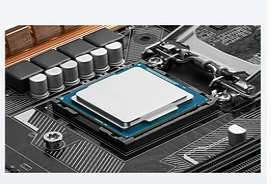1. The separation speed and separation distance between the template and the PCB circuit board (Snap-off)
After the silk screen is finished, the PCB is separated from the silk screen template, leaving the solder paste on the PCB instead of in the silk screen hole. For the finest screen-printed holes, the solder paste may be easier to adhere to the wall of the hole instead of the pad. The thickness of the template is very important. Two factors are beneficial. First, the pad is a continuous area. In most cases, the inner wall of the wire hole is divided into four sides, which helps to release the solder paste; second, gravity and the adhesion to the pad together, the solder paste Pull out the wire hole and stick it on the PCB. In order to maximize this beneficial effect, the separation can be delayed, and the separation of the PCB will be slower at the beginning. Many machines allow a delay after silk-screen printing, and the stroke speed of the falling head of the worktable can be adjusted to be slower than 2~3 mm.
2. Printing speed

During printing, the travel speed of the squeegee on the printing template is very important, because the solder paste takes time to roll and flow into the die hole. If the time is not enough, the solder paste will be uneven on the pad in the traveling direction of the squeegee. When the speed is higher than 20 mm per second, the scraper may scrape through small die holes in less than tens of milliseconds.
3. Printing pressure
The printing pressure must be coordinated with the hardness of the squeegee. If the pressure is too small, the squeegee will not clean the solder paste on the template. If the pressure is too high or the squeegee is too soft, the squeegee will sink into the larger hole on the template. Dig out the solder paste.
Fourth, the empirical formula of pressure
Use a squeegee on the metal template. In order to get the correct pressure, initially apply 1 kg of pressure for every 50 mm squeegee length. For example, a 300 mm squeegee will apply a pressure of 6 kg, and gradually reduce the pressure until the solder paste begins to stay. Scratch dirty on the template, and then increase the pressure by 1 kg. From the time when the solder paste is not cleaned to the point where the squeegee sinks into the wire hole to dig out the solder paste, there should be an acceptable range of 1~2 kg to achieve a good screen printing effect.
In order to achieve good printing results, it is necessary to have the correct solder paste material (viscosity, metal content, maximum powder size and lowest possible flux activity), the correct tools (printing machine, stencil and squeegee) and the correct process ( Good positioning, clean and wipe) combination. According to different products, set the corresponding printing process parameters in the printing program, such as working temperature, working pressure, squeegee speed, automatic template cleaning cycle, etc. At the same time, it is necessary to formulate strict process management and process regulations.
1. Use solder paste in strict accordance with the designated brand within the validity period. The solder paste should be stored in the refrigerator on weekdays. It should be placed at room temperature for more than 6 hours before use, and then it can be opened and used. The used solder paste should be stored separately, and the quality should be determined when re whether it is passed.
2. Before production, the operator uses a special stainless steel rod to stir the solder paste to make it uniform, and periodically use a viscosity tester to sample the viscosity of the solder paste.
3. After printing the first piece of printing analysis or equipment adjustment on the same day, the solder paste thickness tester should be used to measure the thickness of the solder paste printing. The test points are selected at 5 points on the test surface of the printed PCB, including the upper and lower, left and right, and middle points, and record the values. The thickness of the solder paste ranges from template thickness -10% to template thickness + 15%.
4. During the production process, 100% inspection is performed on the printing quality of the solder paste. The main content is whether the solder paste pattern is complete, whether the thickness is uniform, and whether there is solder paste tipping.
5. Clean the template according to the process requirements after the on-duty work is completed.
6. After the printing experiment or printing failure, the solder paste on the printed circuit board must be thoroughly cleaned with ultrasonic cleaning equipment and dried, or cleaned with alcohol and high-pressure gas to prevent the solder paste on the board from being caused when it is used again. Solder balls and other phenomena appear after reflow soldering.